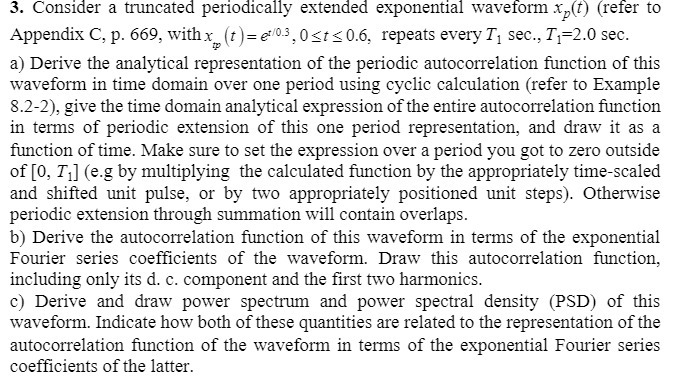Answered step by step
Verified Expert Solution
Question
1 Approved Answer
3. Consider a truncated periodically extended exponential waveform xp(t) (refer to Appendix C, p. 669, with x (t)= 0.3, 0t0.6, repeats every T sec.,

3. Consider a truncated periodically extended exponential waveform xp(t) (refer to Appendix C, p. 669, with x (t)= 0.3, 0t0.6, repeats every T sec., T=2.0 sec. a) Derive the analytical representation of the periodic autocorrelation function of this waveform in time domain over one period using cyclic calculation (refer to Example 8.2-2), give the time domain analytical expression of the entire autocorrelation function in terms of periodic extension of this one period representation, and draw it as a function of time. Make sure to set the expression over a period you got to zero outside of [0, T] (e.g by multiplying the calculated function by the appropriately time-scaled and shifted unit pulse, or by two appropriately positioned unit steps). Otherwise periodic extension through summation will contain overlaps. b) Derive the autocorrelation function of this waveform in terms of the exponential Fourier series coefficients of the waveform. Draw this autocorrelation function, including only its d. c. component and the first two harmonics. c) Derive and draw power spectrum and power spectral density (PSD) of this waveform. Indicate how both of these quantities are related to the representation of the autocorrelation function of the waveform in terms of the exponential Fourier series coefficients of the latter.
Step by Step Solution
There are 3 Steps involved in it
Step: 1

Get Instant Access to Expert-Tailored Solutions
See step-by-step solutions with expert insights and AI powered tools for academic success
Step: 2

Step: 3

Ace Your Homework with AI
Get the answers you need in no time with our AI-driven, step-by-step assistance
Get Started


